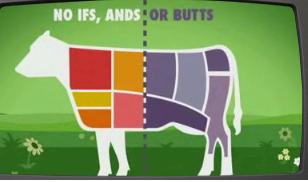

If we divorce ourselves from the literal meaning of this narrative and read it as an allegory, this narrative seems to hint at the process of long-term memory consolidation in the brain as well as the process of forgetting. Thus far we have the biblical narrative of Jacob’s struggle with a “man” who wrestled with him. Jacob Wrestling with the Angel, by Rembrandt (1659) Therefore the children of Israel eat not the sinew of the thigh-vein which is upon the hollow of the thigh, unto this day because he touched the hollow of Jacob’s thigh, even in the sinew of the thigh-vein. This moment in the struggle is beautifully captured by the American poet Emily Dickinson:Īs a result of Jacob’s injury, the Torah enjoins his progeny not to eat the gid hanasheh (of animals slaughtered for consumption) that corresponds to the sciatic nerve: “Let me go, for the day breaketh.” (Genesis 32:27) Seeing that he cannot overcome Jacob through brute force, the man dislocates Jacob’s hip:Īnd when he saw that he prevailed not against him, he touched the hollow of his thigh and the hollow of Jacob’s thigh was strained, as he wrestled with him (Genesis 32:26). Rabbi Chama bar Chanina said, “It was the prince of Esau.”

Our rabbis explain that this man was the prince (guardian angel) of Esau. and there wrestled a man with him until the breaking of the day. The Torah now tells us that Jacob encountered a “man” who wrestled with him: “And Jacob was left”: He had forgotten small bottles and returned for them. The midrash explains that Jacob forgot some trifling small objects and bottles and returned to retrieve them: Īnd Jacob was left alone (Genesis 32:25).

He made himself like a ferry-man, taking from here and depositing there. “What was his”: The animals and the movables. The Torah says:Īnd he took them, and sent them over the stream, and sent over that which he had. As Jacob takes his family over the river Jabbok, he goes back and forth to move his belongings. On some level, they are all true, and they point to an interesting and unexpected parallel in neuroscience. These are very different takes on the identity of the man who wrestles with Jacob. The Zohar maintains that the “man” represents the dark side of one’s psyche. all the wrestling and the conversation in question happened in the vision of prophecy. the story about Jacob in regard to its saying, “And there was a man that wrestled with him”. Maimonides, on the other hand, interprets the appearance of this angel as a dream or a prophetic vision of Jacob: Rashi and many other Torah commentators quote a midrash, according to which this angel was the guardian angel of Esau. Yes, he had power over the angel, and prevailed. Who was that “man” who wrestled with Jacob? The prophet Hosea identifies Jacob’s opponent as malakh, that is, an “angel”: The story of Jacob wrestling with a “man” is yet another of the Torah’s puzzling stories. And he said: “Let me go, for the day breaketh.” (Genesis 32:23–26) And when he saw that he prevailed not against him, he touched the hollow of his thigh and the hollow of Jacob’s thigh was strained, as he wrestled with him. And Jacob was left alone and there wrestled a man with him until the breaking of the day. And he took them, and sent them over the stream, and sent over that which he had. And he rose up that night, and took his two wives, and his two handmaids, and his eleven children, and passed over the ford of the Jabbok. So the present passed over before him and he himself lodged that night in the camp.


 0 kommentar(er)
0 kommentar(er)
